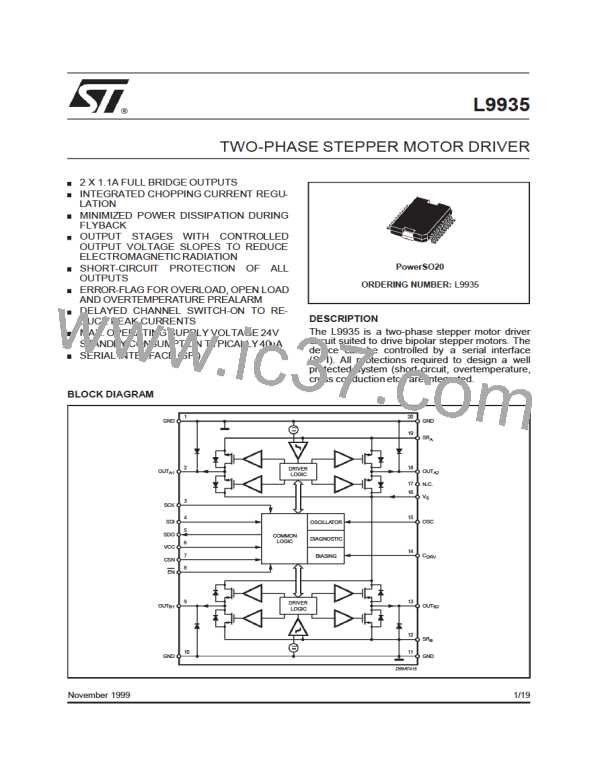L9935
Diagnosis of a Short to VS
During the short current through the sink transistor will rise more rapidly than under normal load condi-
µ
µ
tions. Reaching a peak current of 1.5 times the maximum PWM current between typically 2 s and 5 s
after turn on will be detected as a short to VS.
Detecting a short the low side transistor will try to turn on again the next 7 trigger pulse of the oscillator.
Simultaneouslythe error flag will updated on each pulse.
Figure 6. Normal PWM current versus short circuit current and detection of short to VS..
I short threshold
Q
PWM threshold
t
t
t
t
t
t
t
t
t
t
t
t
t
t
PWM
ON short PWM
ON short PWM
ON
short
PWM
ON
short
PWM detection
signal (internal)
Short detection
signal (internal)
t
t
Error 1
t
t
t
:
turn on of the sink transistor
activation of short threshold
: activation of PWM threshold
on
on
on
+ t = t
+ t
:
1
short
D99AT422
= t
PWM
delay
Between ton and tshort the over current detection is totally blanked.
Between tshort and tPWM the current threshold is set to 1.5 times the maximum PWM current (1.5 times
the current of current setting LL).
Overcurrent now will set the error flag.
After tPWM the current threshold is the nominal PWM current set by the external resistor. Exceeding this
current will just turn off the sink transistor. This is considered as normal operation. The error flag is de-
tachedfrom the comparator after tPWM so no error flag is set during normal pulse width modulation.
Short from an Output to Ground
The current through the short will be detected by the protection of the source transistor. The source tran-
sistor will turn off exceeding a current of typically 1.8A. Minimum overload detection current is 1.2A. To
obtain proper current regulation (by the sink transistors and not by source transistor shut down) the
maximum current of the PWMregulator should be set to a maximum value of 1.1A.
9/19

 STMICROELECTRONICS [ ST ]
STMICROELECTRONICS [ ST ]